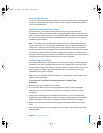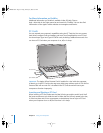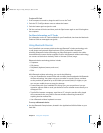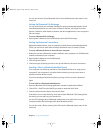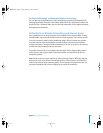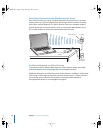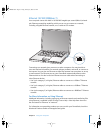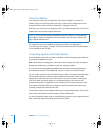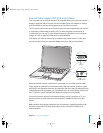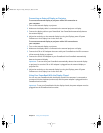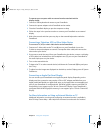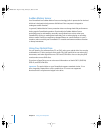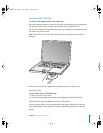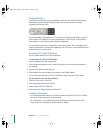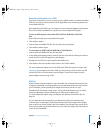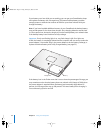
Chapter 3 Using Your Computer 45
External Video Support (DVI, VGA, and S-Video)
Your computer has an external monitor (DVI) port that allows you to directly connect a
display or projector with a DVI port. Use the included DVI-to-VGA adapter to connect
your PowerBook to monitors and projectors that have VGA connectors.
The TV out port (also known as an S-video out port) on your computer lets you connect
to a television, videocassette recorder (VCR), or video projection system using an
S-video cable. You can use TV out to display images on a television, record computer
images on a VCR, or play DVD-Video discs on your television.
If the device you want to connect has a composite port rather than an S-video port,
you can use the S-video-to-composite adapter that came with your PowerBook.
When an external monitor or television is connected, you can either have the same
image appear on both the internal display and the external monitor (known as video-
mirroring) or use the external monitor to extend the size of the Mac OS desktop (known
as dual-display mode). By default, your PowerBook starts up in dual-display mode. Press
the F7 (i) key to switch between dual-display and video-mirroring modes.
If you want sound to come from the external display, such as a projector or TV, you
need to connect an audio cable from the computer’s headphone out port to that
device.
Note: Because of the display limitations of most televisions, images displayed on the
television screen will be of lower quality than those on the built-in display or an
external monitor.
®
DVI port
S-video out port
LL3092.book Page 45 Friday, February 4, 2005 6:02 PM



